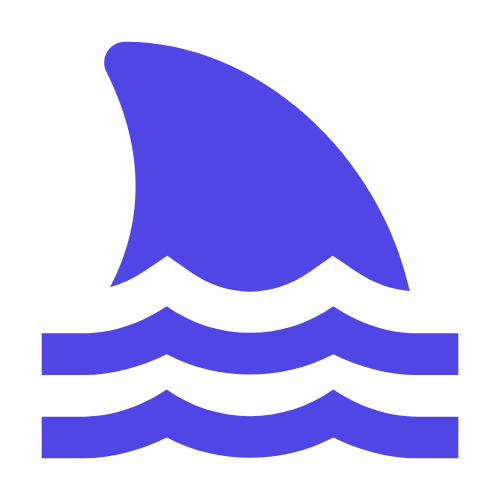Transfer learning is a technique that accelerates the learning process of new tasks by leveraging models that are pre-trained on large amounts of data. In this article, we will explore how to use the pre-trained ResNet model to realize the classification of plant disease images. First, we will introduce the basic structure of the ResNet model and its application in image recognition tasks. Then, we will show how to apply the pre-trained ResNet model to the image classification task of plant diseases and explain the role of transfer learning in this process. Finally, we will discuss some challenges and limitations of transfer learning in practical applications, as well as possible future development directions.
Deep learning project: Use transfer learning to realize plant disease image recognition.
With the development of science and technology, the agricultural field is also constantly introducing advanced technologies to improve production efficiency and quality. Among them, the early detection and diagnosis of plant diseases is one of the important links to ensure the healthy growth of crops.
Traditional disease identification methods rely on expert experience and naked eye observation, which is not only time-consuming and labor-intensive, but also easily affected by subjective factors.
In recent years, image recognition technology based on deep learning has provided new solutions to this problem.
This article will introduce how to use transfer learning, especially the pre-trained ResNet model, to build an efficient and accurate plant disease classification system.
\n#
I. What is transfer learning?.
Before we start, we first need to understand what transfer learning is. Simply put, transfer learning is a machine learning methodology that allows us to apply what we have learned in one task to another related but different task.
This method is especially suitable for scenarios where the amount of data is small or the labeling cost is high.
By migrating existing knowledge, we can greatly reduce the amount of data required for new tasks as well as training time.
\n#
II. Why choose ResNet as the base network?.
Residual Neural Network (Residual Neural Network) is a deep convolutional neural network architecture proposed by Microsoft Research. Its core idea is to solve the problem that deep network is difficult to optimize by introducing "jump connection". Compared with other common CNN structures such as VGG or Inception, ResNet has a deeper hierarchy while maintaining better performance.
In addition, due to its excellent performance on multiple large visual datasets such as ImageNet, ResNet has become one of the ideal choices for image feature extraction.
\n#
III. Preparations.
- # Environment Configuration #: Make sure Python and related libraries are installed in your development environment, including but not limited to TensorFlow/Keras, OpenCV, etc.
- # Dataset Collection #: You need to prepare a certain number of tagged plant disease pictures as a training set.
These pictures can be obtained from public databases, or they can be taken by themselves and manually annotated.
- # Preprocessing steps #: Perform necessary transformation operations on the original image, such as resizing, normalizing, etc., in order to better adapt to the model input requirements.
import cv2
import numpy as np
from tensorflow.keras.preprocessing.image import ImageDataGenerator
# 定义图像尺寸
IMG_HEIGHT, IMG_WIDTH = 224, 224
# 创建数据生成器
train_datagen = ImageDataGenerator(rescale=1./255, validation_split=0.2)
test_datagen = ImageDataGenerator(rescale=1./255)
# 加载训练集
train_generator = train_datagen.flow_from_directory(
'path/to/your/dataset', # 替换为你自己的数据集路径
target_size=(IMG_HEIGHT, IMG_WIDTH),
batch_size=32,
class_mode='categorical',
subset='training')
# 加载验证集
validation_generator = train_datagen.flow_from_directory(
'path/to/your/dataset',
target_size=(IMG_HEIGHT, IMG_WIDTH),
batch_size=32,
class_mode='categorical',
subset='validation')
Fourth, build a model.
The next step is to use the Keras framework to build our transfer learning model. Here we will load a pre-trained ResNet 50 model and freeze most of its layers to avoid overfitting, and only modify the last few layers to accommodate the new classification task.
from tensorflow.keras.applications import ResNet50
from tensorflow.keras.layers import Dense, GlobalAveragePooling2D
from tensorflow.keras.models import Model
from tensorflow.keras.optimizers import Adam
# 加载预训练的ResNet50模型
base_model = ResNet50(weights='imagenet', include_top=False)
# 冻结所有卷积层
for layer in base_model.layers:
layer.trainable = False
# 添加自定义顶层
x = base_model.output
x = GlobalAveragePooling2D()(x) # 全局平均池化
x = Dense(1024, activation='relu')(x) # 全连接层
predictions = Dense(num_classes, activation='softmax')(x) # 输出层
# 构建最终模型
model = Model(inputs=base_model.input, outputs=predictions)
# 编译模型
model.compile(optimizer=Adam(lr=0.001), loss='categorical_crossentropy', metrics=['accuracy'])
V. Training and evaluation.
Once the model is built, we can train it with the prepared dataset. At the same time, the current loss value and accuracy rate are printed after each epoch, which is convenient for monitoring the status of the training process.
# 训练模型
history = model.fit(
train_generator,
steps_per_epoch=len(train_generator),
epochs=10, # 根据具体情况调整迭代次数
validation_data=validation_generator,
validation_steps=len(validation_generator))
VI. Results analysis and optimization suggestions.
After the model training is completed, its performance can be viewed intuitively by drawing a loss curve and other methods. If poor performance is found on the test set, you may need to further tune the parameters or try more complex network structures.
In addition, data enhancement techniques can also be considered to increase sample diversity, thereby improving the generalization ability of the model.
In conclusion, with the help of transfer learning and a powerful deep learning framework, effective solutions can be quickly developed even for specific problems in specialized fields like plant diseases.
I hope this article can help you better understand and apply this technology!





